Since the weather was nice, I decided to do the 2-mile Alpine Pond Loop Trail. Technically it was more subalpine and montane than alpine (which doesn't have any trees), but that may have been too confusing for some folks. I started out on the upper trail and planned to loop back on the lower trail. There was a lovely brochure that explained in detail the various numbered stops.

A map of the trail

An example of the markers. This one was focusing on the weathering and cracks of this rock due to repeated freezing and thawing.

Rhyolitic Tuff is volcanic rock formed during very explosive volcanic eruptions.

Each layer represents a separate eruption that covered everything with hot ash and molten lava.

The forest path
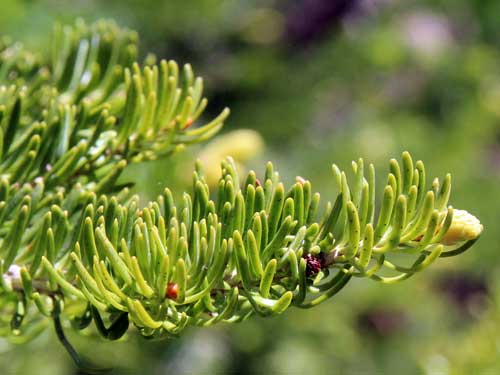
Subalpine firs have flat and flexible needles. The cones stand erect then fall apart while they are still on the tree (you won't find them on the ground).
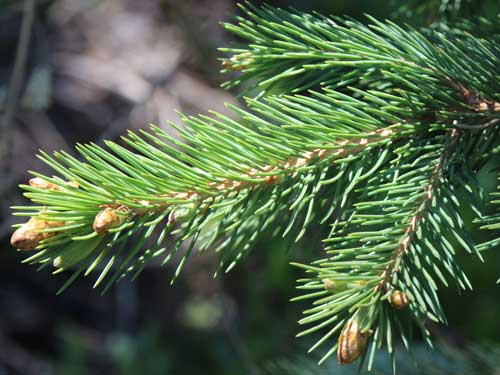
Englemann spruces have sharp, square needles. Their cones hang downwards and fall apart while on the ground.

There are many dead Spruce trees in the area thanks to a major bark beetle outbreak in the mid-1990's. In general, the beetle is helpful to the forest, killing off the older, weaker trees to make room for new growth. But warmer winters are allowing larger numbers of the beetles to survive, enabling them to bring down even strong, younger trees. It may take more than 100 year to regrow a mature spruce forest.

Beetle tracks (although not necessarily the ones that killed this tree)

A glimpse to remind us where we are... next to a stunning amphitheater!

This large Englemann spruce was hit by lightning in 1986, causing a thick strip of bark to peel off. Lightning can set a tree on fire or even cause it to explode by heating the sap until it suddenly turns into steam. Some trees can survive a lightning strike if insects and disease don't attack the damaged wood.

Quaking Aspens get their name from the way their leaves shake in even the slightest breeze.
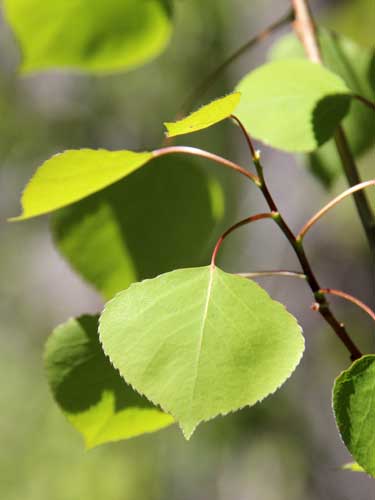

Aspens need sun to grow. However, as the aspen stand matures, it blocks out the sun for its own seedlings. Englemann spruce and subalpine fir, however, love the shade, so they are able to take over the grove, eventually replacing it completely.

Leaving the forest and entering a meadow

The pink flowers of Chiming Bells turn blue when the plant is ready for pollination (red is a color bees can't see). Other flowers change color after the flower has been pollinated in order to save the pollinator from wasting its time and energy hunting in the flower for food and to encourage it to pollinate the rest of the flowers on the plant instead.

Lupine gets its name from the Latin word for wolf. Lupines were once believed to be wolf-like, devouring all soil nutrients. We now know that exactly the opposite is true. Special bacteria on the plant's root nodules release nitrogen into the soil, enriching it further for other plants.

Markagunt Penstemon is the most common species of native penstemon in the monument. The name Penstemon refers to the fact that the flowers have five stamens.

Fendler's Meadow-rue is usually dioecious (meaning male and female flowers occur on separate plants). This is a male plant.
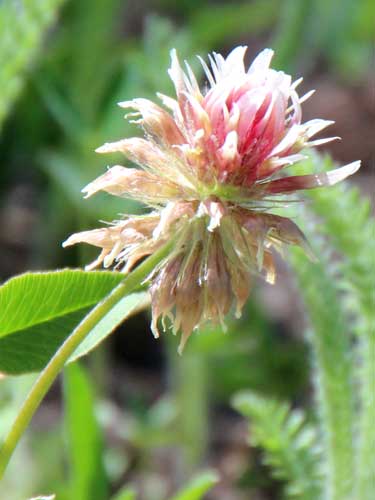
Clover
Life at this elevation can be quite difficult. Plants have devised different ways to adapt.
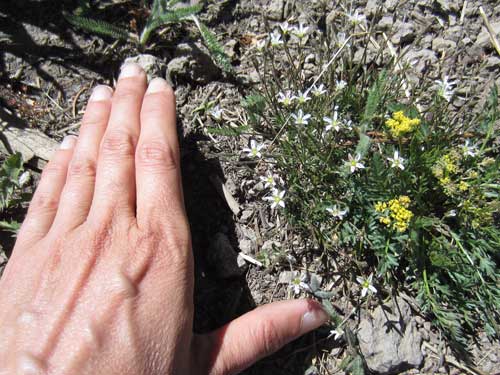
One adaptation (such as this Fendler's Sandwort) is to be very tiny...

... which doesn't imply being simple or not pretty.
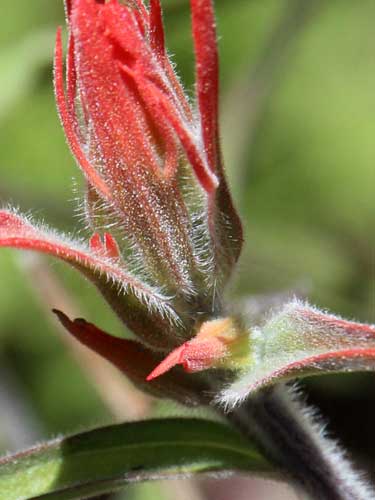
Another technique is to be very hairy, such as this Scarlet Paintbrush.

Edith's Checkerspots range from sea level to treeline through diverse habitats such as coastal chaparral, meadows, foothils, open woods and alpine fields.

Even wasps can serve as pollinators.
I reached the end of the upper trail and doubled back to return along the lower trail. The vegetation was much denser and the flowers were completely different.
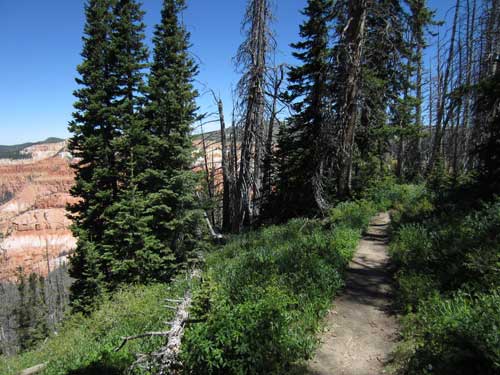

55 million years ago, the area was the lowest, not the highest, point around. Fossils within the rock pay tribute to the ancient lake that once rested here.

A closer view of Brian Head. This peak is a mountain not a volcano. During the volcanic activity 30 million years ago, however, it lost about 80% of its top and was then buried under volcanic rock.

The various colors
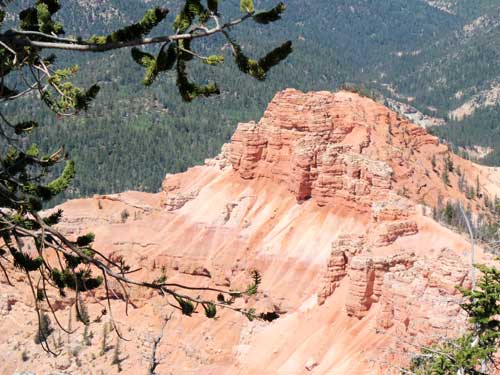

A new forest begins to grow.

Dead trees aren't removed. Instead they are left to decay, thereby retuning the nutrients to the ground.

There were many many wildflowers!

Purple-fringe blooms from early June to early August.

The Canada violet

Parry’s Primrose loves wet areas, especially near streams or snow melt. Charles Parry was a collector of western plants who documented this flower in 1861.

Larkspur, native to Europe, has naturalized throughout North America.

Baby columbines


Jacob's Ladder prefers higher elevations.
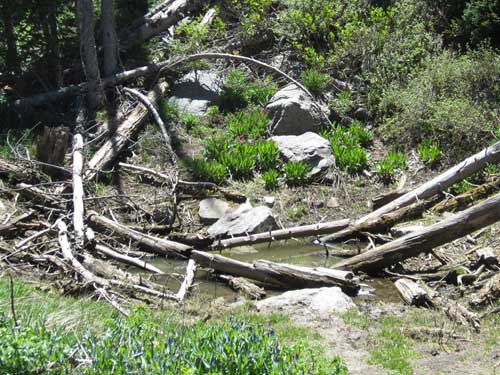
The rock layers here are primarily limestone, which is soluble in water. As the rock is dissolved and carried away, tunnels, caves or depressions can form. Sometimes the overlying soil collapses into the opening, creating a sinkhole.

Holes from the bark beetles

